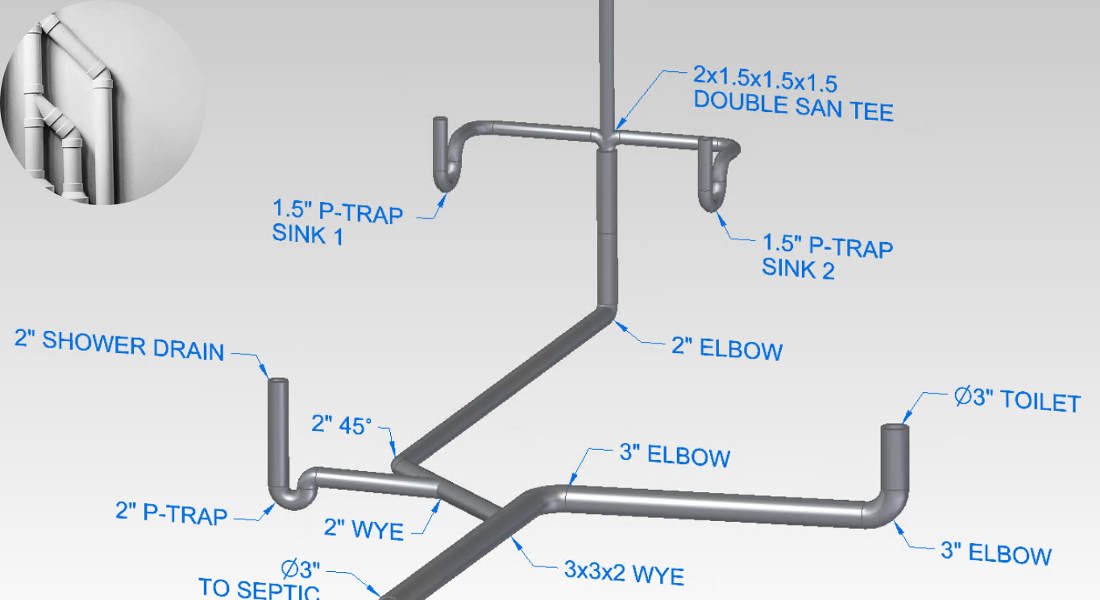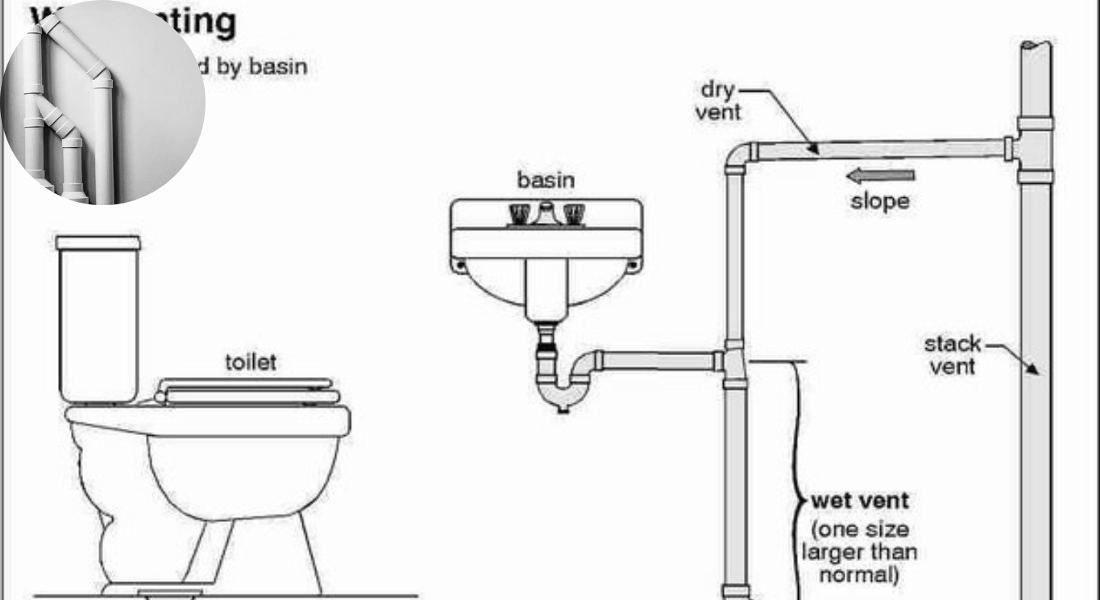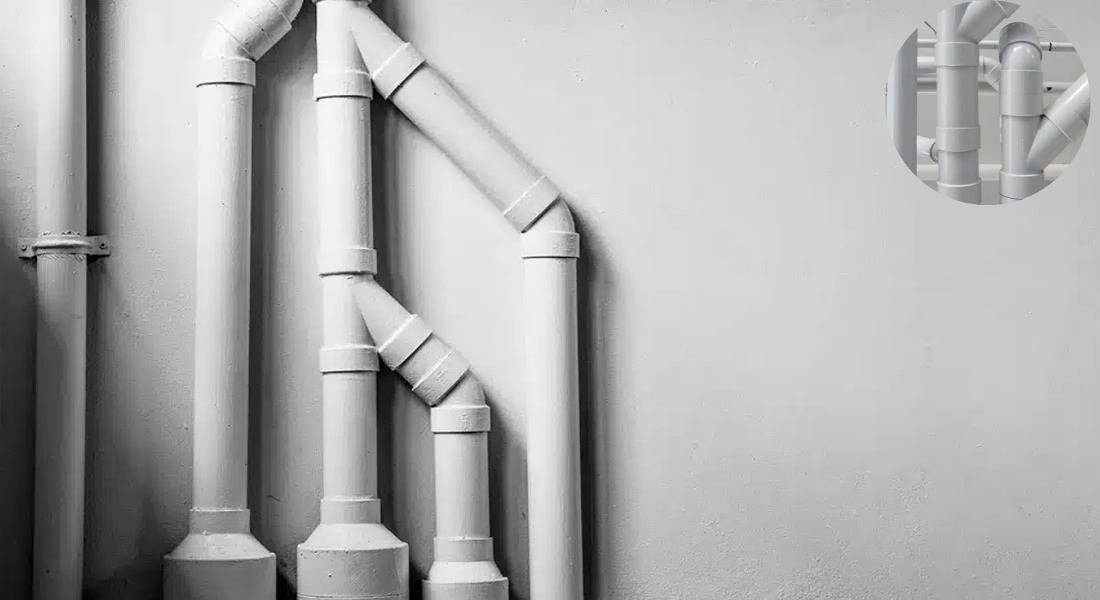Plumbing plays a critical role in every home, ensuring water flows efficiently and waste is removed safely. While most people understand the importance of plumbing systems, fewer are aware of venting systems within plumbing and their significance. One such venting system, wet venting, has grown in popularity due to its efficiency and practicality.
But what exactly is wet venting, and why does it matter? If you’re wondering what a wet vent home plumbing system is, you’re in the right place.
What Is Wet Venting in Home Plumbing?
To understand wet venting, let’s first address the basics. A venting system in plumbing ensures that air flows through pipes, preventing issues like water traps losing their seals, waste pipes clogging, or sewer gases escaping into your home.
Understanding Wet Venting
A wet vent is a specific type of plumbing vent that combines two functions:
- It acts as a vent to release air pressure.
- It simultaneously serves as a waste pipe to carry water or waste away from fixtures.
In simpler terms, the same pipe used to drain water from one fixture (like a sink or toilet) can also provide air circulation for another fixture within the system. This dual purpose makes wet venting unique and efficient compared to traditional “dry vent” systems, where separate pipes are required for venting and waste removal.
How Does Wet Venting Work?
The principle of wet venting is straightforward. For instance, in a bathroom, a single pipe may serve as a vent for the toilet while also draining water from the sink or shower. This approach works by maintaining proper airflow and pressure balance within the plumbing system, ensuring that waste flows smoothly and without blockages.
Why Is Proper Installation Important?
Because wet venting involves combining functions, it must meet plumbing code requirements to ensure safety and proper performance. Incorrect installation can lead to problems like sewer gas leaks or slow drainage. It’s always recommended to consult a licensed plumber when considering wet venting for your home.
The 5 Key Benefits of Wet Venting
Now that we’ve covered the basics of a wet-vent home plumbing system let’s explore why homeowners and contractors increasingly choose wet venting over traditional venting methods.
Space Efficiency
One of the standout advantages of wet venting is its ability to save space.
Reduces the Number of Pipes
Wet venting combines the roles of venting and waste removal into a single pipe. This reduces the overall number of pipes needed in your plumbing system, making it ideal for homes where space is limited.
Ideal for Compact Homes
If you’re working with a small bathroom or kitchen, wet venting is a highly effective solution. It minimizes the need for additional wall or floor space to accommodate multiple pipes, allowing for a cleaner and more streamlined design.
Modern Design Trends
As homes move toward minimalist, space-efficient designs, wet venting aligns perfectly with these trends. It allows architects and contractors to create open, uncluttered spaces without sacrificing Functionality.
Cost-Effective Installation and Materials
Wet venting doesn’t just save space—it saves money, too.
Fewer Materials
Since wet venting uses fewer pipes and fittings, you’ll spend less on materials. For homeowners overseeing a new construction or remodel, this can translate into significant cost savings.
Simpler Installation Process
The reduced complexity of wet venting also means less time and labor are required for installation. Plumbers don’t have to install as many separate pipes, which helps cut down on labor expenses.
Real-Life Savings
For example, a bathroom remodel using wet venting might save hundreds of dollars in materials and labor compared to a traditional system. These savings can add up substantially throughout a home renovation.
Simplified Plumbing Design
Another benefit of wet venting is how it simplifies the overall design and layout of your plumbing system.
Streamlined Layouts
With wet venting, the plumbing system becomes less complex. A single pipe can serve multiple fixtures, reducing the need for extensive pipe networks. This simplicity makes it easier for plumbers to plan and execute installations.
Fewer Errors
A simplified system also means fewer opportunities for installation errors. This can save homeowners from costly repairs down the line.
Easier Troubleshooting
If an issue arises, a simpler plumbing design makes it easier to identify and resolve problems. Wet venting reduces the guesswork, allowing for faster and more accurate troubleshooting.
Efficient Functionality and Performance
Wet venting doesn’t just save space and money—it also performs exceptionally well.
Smooth Waste Removal
Wet venting ensures waste is removed efficiently by maintaining proper air pressure and flow. This helps prevent issues like slow drains or clogs.
Odor Prevention
A well-designed wet vent system prevents sewer gases from entering your home. This not only improves indoor air quality but also keeps your living spaces smelling fresh.
Maintains Water Trap Seals
Every plumbing fixture has a water trap that prevents sewer gases from escaping. Wet venting supports these traps by maintaining adequate airflow, ensuring they remain sealed and effective.
You may also read (does house cleaning really count as exercise).
Easier Maintenance and Accessibility
Lastly, wet venting makes maintaining your plumbing system more straightforward.
Simpler Maintenance
A wet venting system has fewer pipes and connections, there’sso less that can go wrong. This makes routine maintenance quicker and less expensive.
Easier Access
Because the system is less complex, plumbers can more easily access pipes for inspection or repairs, reducing downtime and inconvenience for homeowners.
Long-Term Savings
Over time, a wet venting system’s reduced maintenance needs can lead to significant cost savings. Homeowners can enjoy peace of mind knowing their plumbing system is efficient and easy to manage.
Benefit Description
Space Efficiency Reduces the number of pipes, ideal for compact homes.
Cost-Effective Saves on materials and labor costs.
Simplified Design Streamlines plumbing layouts, reducing errors and troubleshooting time.
Efficient Functionality Ensures smooth waste removal, odor prevention, and proper pressure balance.
Easier Maintenance Simplifies inspections, repairs, and long-term maintenance costs.
Additional Considerations
While wet venting offers many benefits, there are some important factors to keep in mind:
Proper Installation is Key
Wet venting requires careful planning and precise installation. Hiring an experienced plumber ensures the system meets code requirements and functions properly.
Regional Plumbing Codes
Not all areas allow wet venting, as plumbing codes vary by region. Be sure to check local regulations before proceeding.
Signs of Problems
Watch for signs of wet venting issues, such as persistent odors, slow drainage, or unusual gurgling sounds. Addressing these problems early can prevent more significant issues later.
When Wet Venting May Not Work
In some cases, traditional venting systems may be a better choice. For example, larger homes with more complex plumbing needs might require separate vent and waste systems for optimal performance.
Installation Tips for Wet Venting
If you’re considering wet venting for your home, here are a few tips to ensure a successful installation:
- Plan Fixture Placement: Group fixtures together to maximize the efficiency of wet venting.
- Use Correct Pipe Sizes: Follow plumbing code requirements for pipe diameter and slope.
- Secure Connections: Ensure all pipes are tightly connected to prevent leaks.
- Consult Professionals: Always work with a licensed plumber to guarantee proper installation.
You may also read (navigating garage plumbing costs a homeowners guide).

